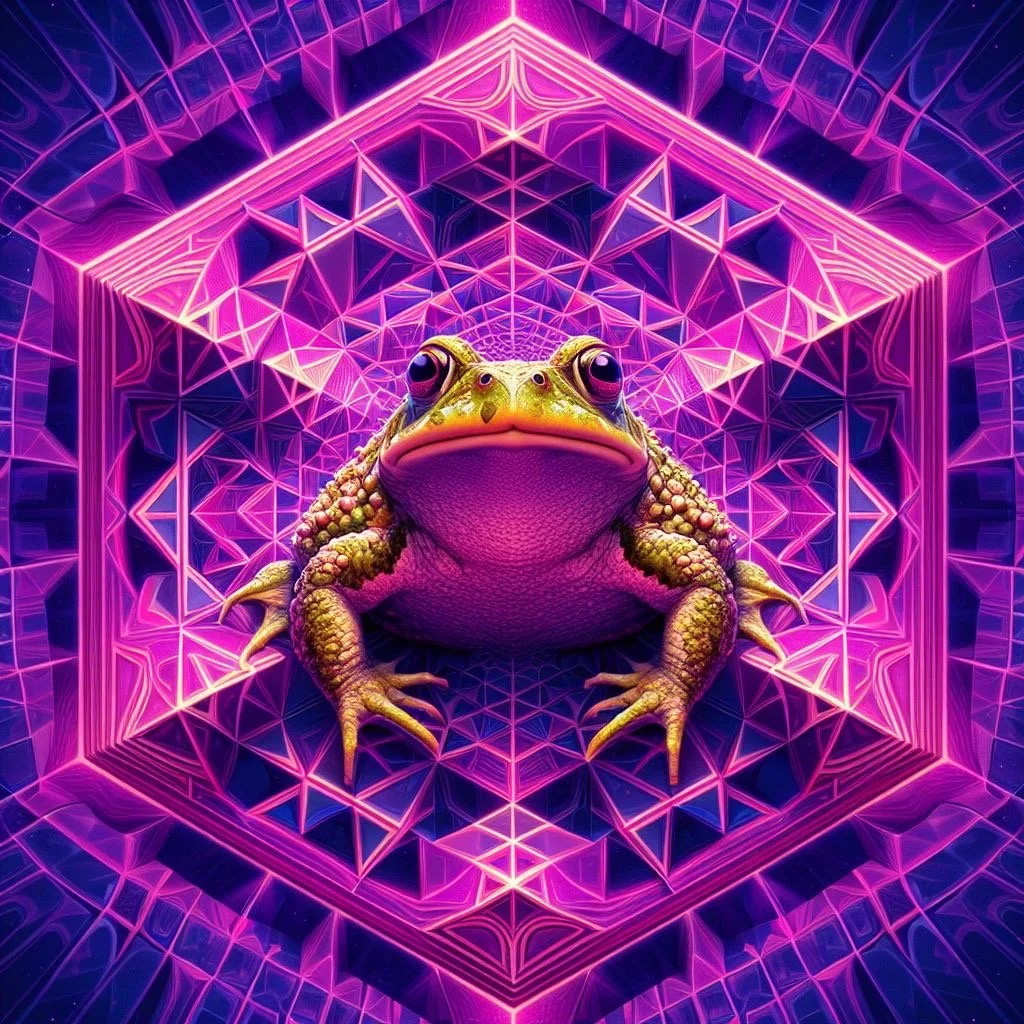The Timeless Journey of 5-MeO-DMT: From Ancient Rituals to Modern Therapies
5-MeO-DMT is a naturally occurring psychoactive compound revered for its extraordinary capacity to induce profound, often mystical experiences. Found in a range of plants, seeds, fungi, and even animals, this powerful entheogen has been part of humanity’s exploration of consciousness for centuries from ancient ceremonial rituals to contemporary spiritual and therapeutic practices. Though historical records are limited, what we do know reveals a deep and enduring human fascination with altered states of awareness and the pursuit of healing through expanded perception.
Archaeological finds—such as puma bone pipes with Anadenanthera residue from Argentina’s Humahuaca Gorge (circa 2000 BCE) and ceremonial snuff trays uncovered in Brazil, Chile, Colombia, Peru, and the Caribbean demonstrate the widespread ritual use of these psychoactive plants. These practices continued well into the colonial era, as noted by early European chroniclers like Friar Ramón Pané.
Other 5-MeO-DMT containing plants, like Virola theiodora, were used by tribes such as the Yanomami, who prepared powerful snuffs like ebena or paricá from its resin. These were administered nasally through long tubes, often inducing visionary states and emotional release. Trace amounts of 5-MeO-DMT are also present in Diplopterys cabrerana (Chaliponga), sometimes added to ayahuasca brews. Though N,N-DMT is the primary active compound found ayuhausca, 5-MeO-DMT may subtly enhance the brew’s depth. Together, these plant-based practices reflect a deep cultural reverence for psychoactive substances as sacred tools for healing and spiritual connection.
Ancient Rituals and Indigenous Use
Historical accounts of 5-MeO-DMT usage trace back to early South American and Caribbean cultures, where tribes employed psychoactive seeds in sacred rites. Plants like Anadenanthera peregrina (known as yopo, jopo, or cohoba) and Anadenanthera colubrina (vilca, cebil, huilco, and others) were central to these practices. The seeds were dried, ground, and mixed with alkaline substances such as lime made from snail shells or wood ash to increase their potency. The resulting snuff was inhaled through hollow bones or tubes, often administered by another participant, inducing an altered state believed to bridge the material and spiritual realms.
In the early 20th century, Japanese chemists Hoshino Toshio and Kenya Shimodaira first synthesized 5-MeO-DMT. It wasn’t until the 1950s and ’60s that researchers began identifying its natural sources and unique psychoactive effects, particularly its capacity to induce ego dissolution and unitive consciousness, distinguishing it from other tryptamines like N,N-DMT.
The appearance of the Sonoran Desert toad (Incilius alvarius, formerly Bufo alvarius) in the psychedelic landscape marked a turning point. Its secretion, rich in 5-MeO-DMT, sparked worldwide interest in “toad medicine.” Although there's no direct evidence that ancient Mesoamerican cultures used its secretion psychoactively, the toad was a powerful spiritual symbol linked to rain, fertility, and transformation. Olmec and Maya artifacts featuring toad imagery suggest a long-standing reverence.
Modern use of the toad secretion began in the early 1980s with Ken Nelson, a psychonaut inspired by an Omni magazine article. After collecting and drying the secretion, he became the first known person in modern times to use it as a psychedelic. In 1984, under the pseudonym Albert Most, he published Bufo Alvarius: The Psychedelic Toad of the Sonoran Desert, describing its overwhelming effects: “...an overload of thoughts and perception, brief collapse of the ego, and loss of the space-time continuum.”
Nelson’s work ignited global interest in toad medicine while also raising concern about ecological impact. Alarmed by the risks to the toad population, he pioneered synthetic alternatives, helping to develop a biosynthetic version of 5-MeO-DMT, preserving its power while reducing environmental harm. His story bridges ancient symbolism, modern discovery, and the growing call for ethical and sustainable use.
Therapeutic and Spiritual Relevance in Contemporary Use
The toad remained largely unknown to modern psychedelic culture until 2011, when Dr. Octavio Rettig began administering its secretion to the Comca’ac (Seri) people of Sonora, Mexico, as a treatment for addiction. While his methods drew both praise and criticism, they reignited interest in potential ancestral use, though concrete evidence of toad secretion in traditional indigenous medicine remains unverified.
That same year, 5-MeO-DMT was classified as a Schedule I substance in the U.S., placing it alongside LSD and psilocybin and making it illegal outside of approved scientific research. Despite legal restrictions, 5-MeO-DMT continued to gain momentum in underground and ceremonial circles, as individuals reported rapid emotional breakthroughs, spiritual awakenings, and relief from conditions like PTSD, depression, and addiction.
Recent clinical interest has renewed attention on the compound’s potential. Studies now suggest that, when held in a safe and supportive environment, 5-MeO-DMT may catalyze deep healing by quieting the default mode network, releasing stored trauma, and inducing experiences of unity and self-transcendence. These findings have fueled efforts to develop ethical, structured therapeutic frameworks to support its use combining modern science with ancient wisdom.
However, this rapid resurgence raises critical questions around safety, consent, integration, and cultural appropriation. As ceremonies proliferate, concerns about untrained facilitators, over-harvesting of toads, and the commodification of indigenous-inspired practices continue to grow. Some regions are exploring new regulatory frameworks to honor the medicine’s potential while preventing harm and misuse.
The Evolving Legacy of 5-MeO-DMT
The journey of 5-MeO-DMT reflects humanity’s timeless desire to reach beyond ordinary consciousness and into the heart of healing, mystery, and awakening. From the ancient snuff rituals of the Amazon to the chemically synthesized compounds used in today’s therapeutic settings, this molecule continues to inspire awe and transformation.
As we stand at the intersection of ancient tradition and modern science, the path forward demands intention, respect, and responsibility. Whether used in sacred ceremony, clinical settings, or personal practice, 5-MeO-DMT invites us to explore consciousness with humility and reverence. Its legacy now calls for a holistic approach—one that weaves together ecological stewardship, cultural sensitivity, and the enduring human quest for meaning, connection, and wholeness.




